My success rate with the Moskva (Moscow) 4 camera I bought a year or so ago has not been good. Until recently only a few times have I managed to get even half a roll of useable negatives and that is before looking at the composition. It is amazing how many things can go wrong with just 8 frames, focus out, wrong exposure, shutter failing to trip, missing the markers on the backing paper and then overlapping exposures, and the main one; camera shake. Sometimes all these and more on the same roll of film, even on the same frame. And all that before the developing goes wrong.
While I am still struggling with the failures associated with general user incompetence I have gradually managed to overcome most of the camera shake problem. A frequent issue it appears with Moskva folders and presumably the 9X6 Zeiss Super Ikontas on which the Moskva cameras are based as well, though I have yet to see it mentioned with the latter.
The camera does not sit well on a tripod, but cannot be used without one. There are two places to attach to the tripod head. The one on the body is too far away from the centre of gravity and in typical Zeiss fashion the mount protrudes from the camera base, so with nothing to modify the attachment the camera is very unstable and rocks a lot. The mount on the door is at the centre of gravity and flat but in a restricted space, none of the tripod heads I have will fit without fouling on the camera somewhere.
To make it more difficult pressing the shutter button with a finger or using a remote release requires a lot of effort, so even a cable release makes the camera move which rather defeats the point of using one in the first place. Unlike other similar cameras there is no place to attach a cable release directly onto the shutter which would have solved that part of the problem.
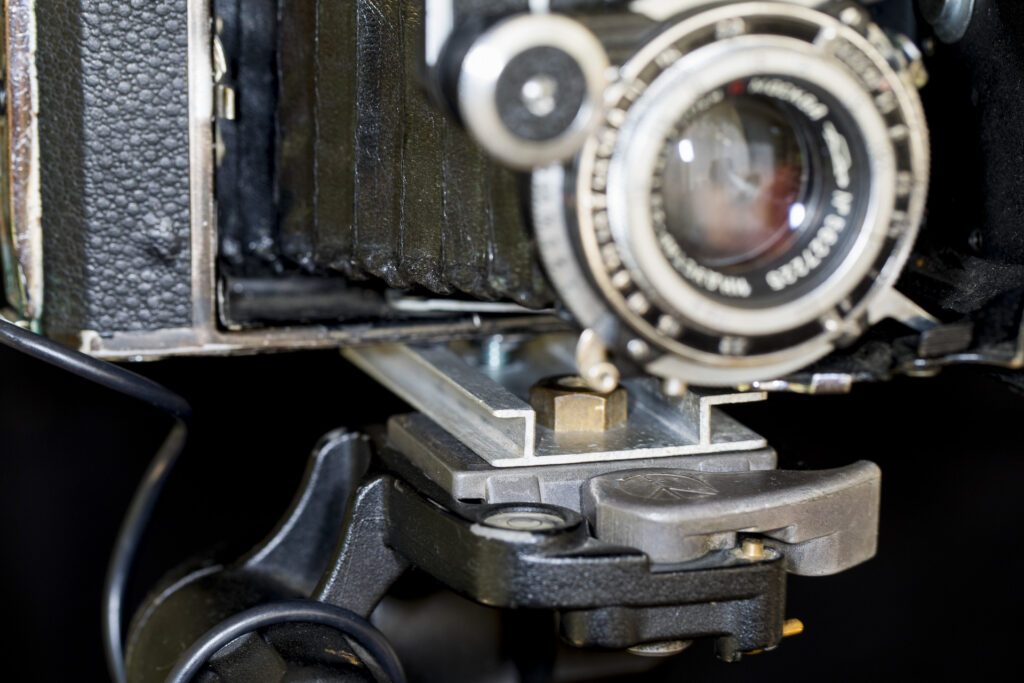 So to begin with I made a simple bracket to hold the camera on the tripod using a piece of aluminium channel from a greenhouse frame which both moves the centre of gravity to over the middle of the tripod head and also supports the camera either side of the protruding body mount.
So to begin with I made a simple bracket to hold the camera on the tripod using a piece of aluminium channel from a greenhouse frame which both moves the centre of gravity to over the middle of the tripod head and also supports the camera either side of the protruding body mount.
And now I trigger the shutter with an air release so there is very little pushing on the shutter release button that is physically connected to my hand.
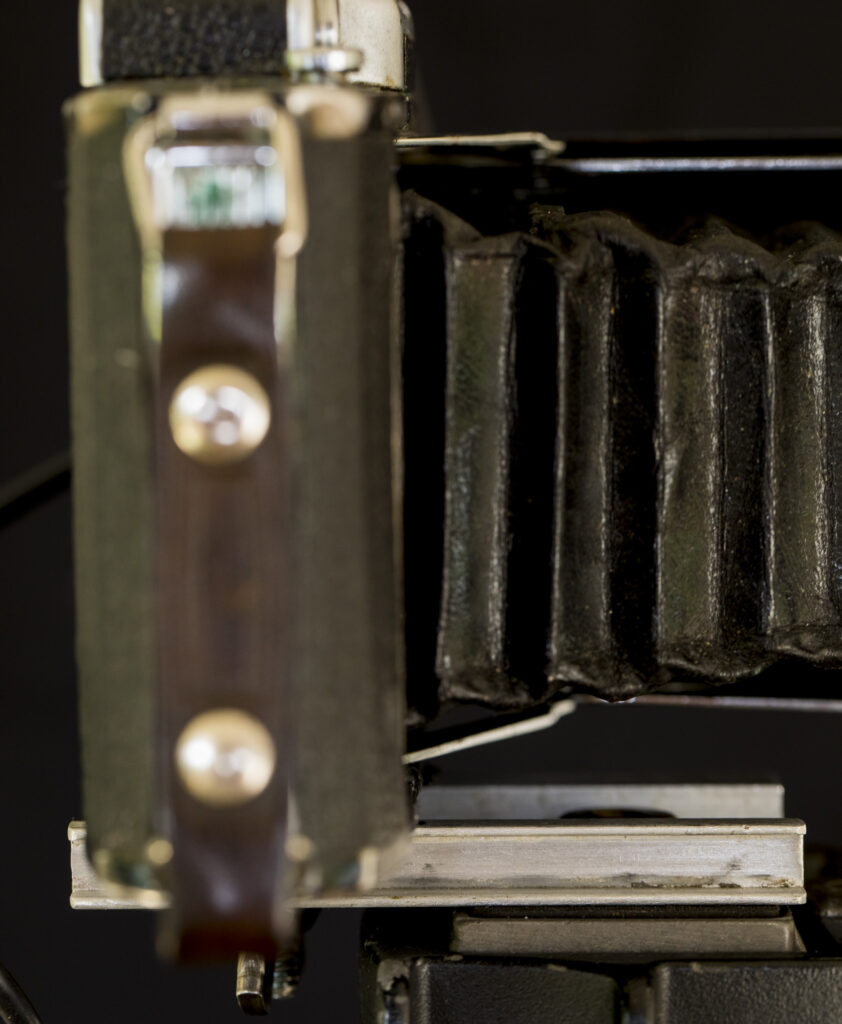 And then I use slow film. I have always found it is exposure times in the 1/30th second to 1 second range that give the most trouble with camera shake. Too long to freeze any camera movement and not long enough for any movement in the first part of the exposure to be insignificant and not show on the image. So to reduce the effects on the image of any movement that does occur I use the slowest film available and make long exposures. Rollei RPX25 fits that criteria well and it’s high contrast on dull days give results that appeal to me at least.
And then I use slow film. I have always found it is exposure times in the 1/30th second to 1 second range that give the most trouble with camera shake. Too long to freeze any camera movement and not long enough for any movement in the first part of the exposure to be insignificant and not show on the image. So to reduce the effects on the image of any movement that does occur I use the slowest film available and make long exposures. Rollei RPX25 fits that criteria well and it’s high contrast on dull days give results that appeal to me at least.
On a dull and windy June day with the sky heavily overcast and rain in the air I took the camera and followed the stream down to the river taking photos as I went and trying different compositions. When later I developed the film I found for the first time since I started using the camera I could choose which images I preferred from the whole roll.
The first two frames are of a stream in what I call a Ghyll (or Gill with a hard ‘G’) but is called a Dingle in the borderlands of Wales and the Marches; a steep-sided wooded stream valley or ravine. In digital colour photos I took of the same scene everything in this image is green, indeed it is in all these photos as even most of the rocks are covered in moss and the water was reflecting the vegetation. In summer with the leaves on the trees the stream here receives no direct sunlight at all, and only rarely in winter does it reach into the ravine at all.
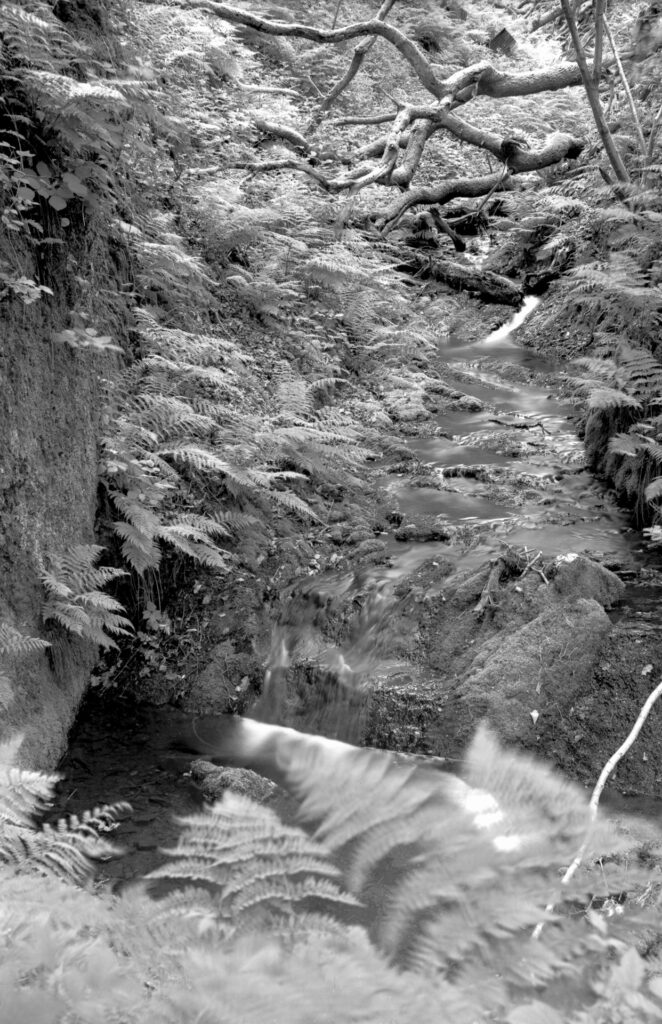
Frames 1 and 2 are almost the same, so to make it harder to compare them I have put the second at the end of this article. Having composed the image and triggered the shutter for frame 1 I forgot to start counting the seconds. My (roughly) calculated exposure for the light meter reading plus reciprocity failure had given me a figure of around 25 to 30 seconds as a reasonable time. Realising I had no idea how long the shutter had been open I guessed, closed the shutter then repeated, this time starting counting from the beginning. Despite this the first is slightly better exposed than the second where some of the ‘highlights’ have started to become too bright.
A short distance downhill the stream leaves the ghyll and flows between fields until it reaches the river. Here it is partly open to the sky, giving me shorter exposures and increase contrast across the image even on this really dull day.
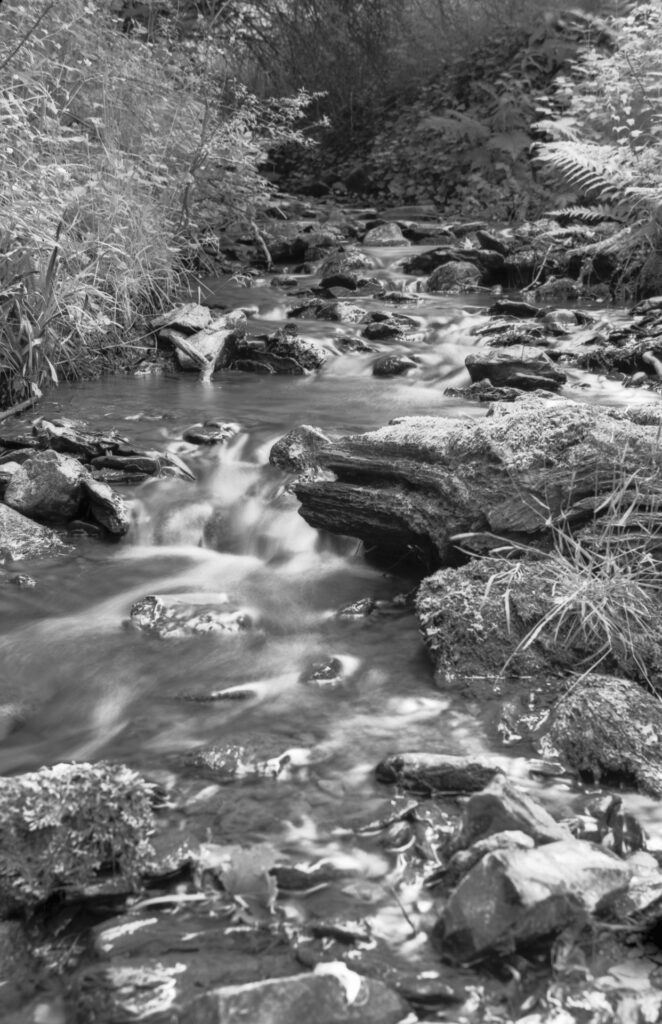
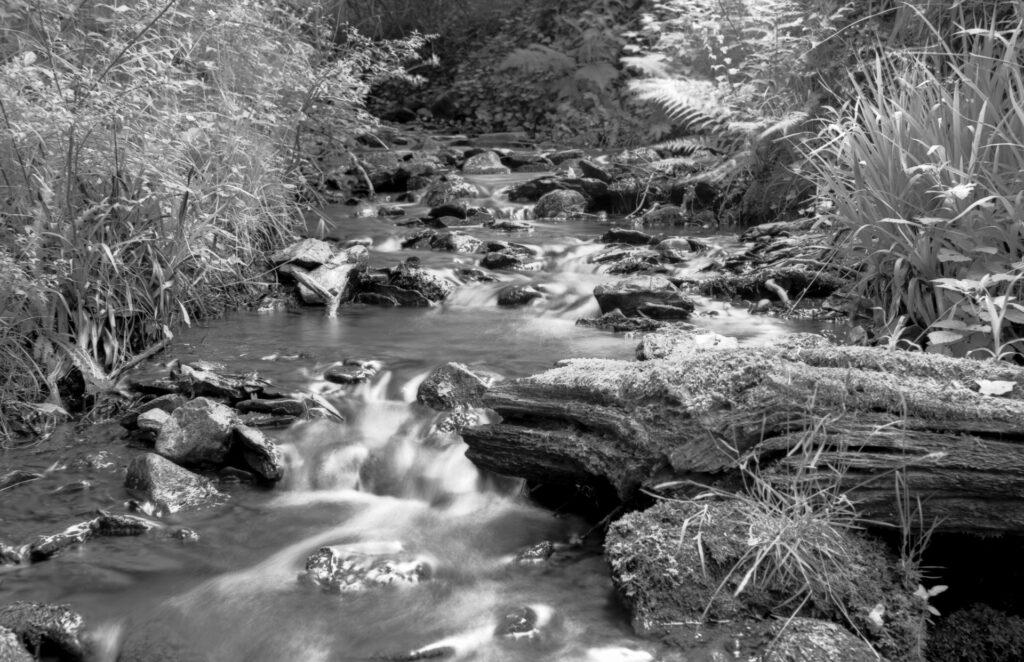
For the second half of the film I went to the bank of the river, known here as the Afon Hafren which becomes the River Severn downstream in England. Here the trees have a closed canopy again and were not sheltered from the breeze that was blowing. I tried variations on the composition while hoping I would get at least one good negative.
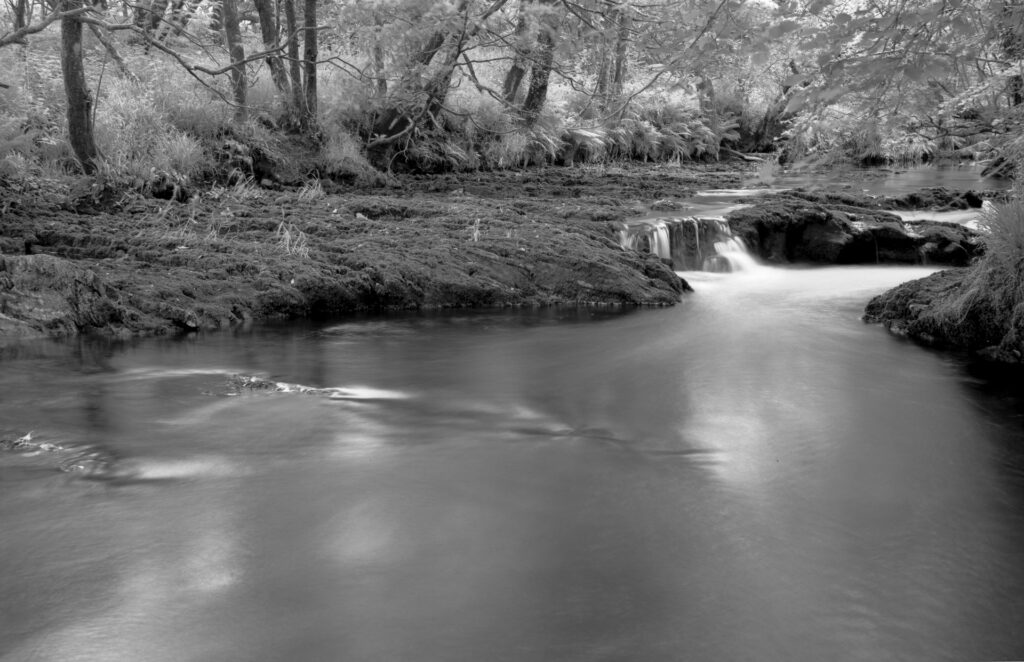
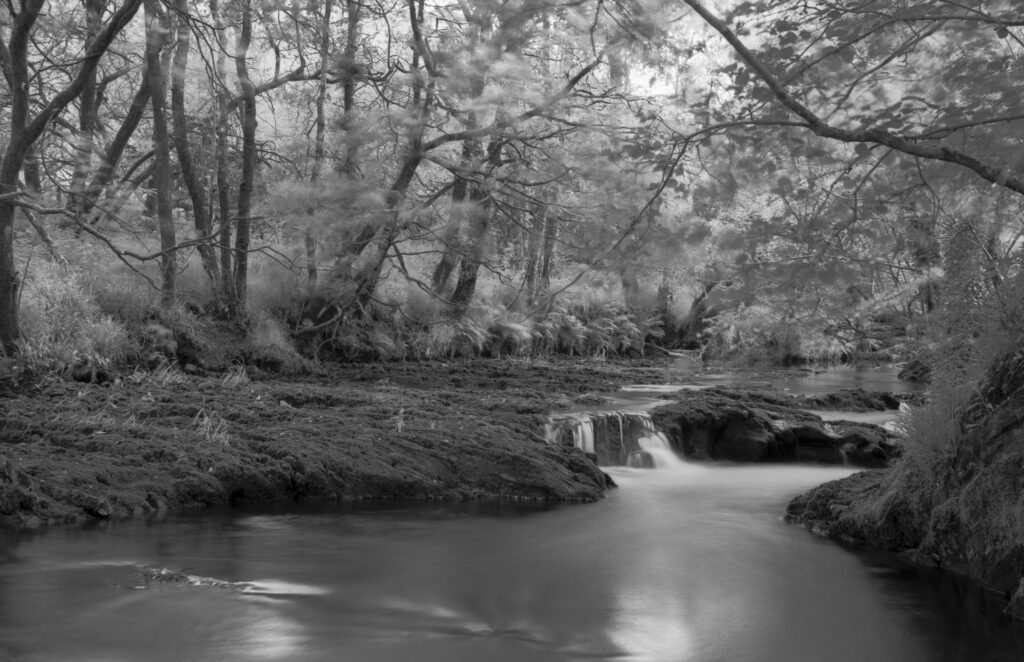
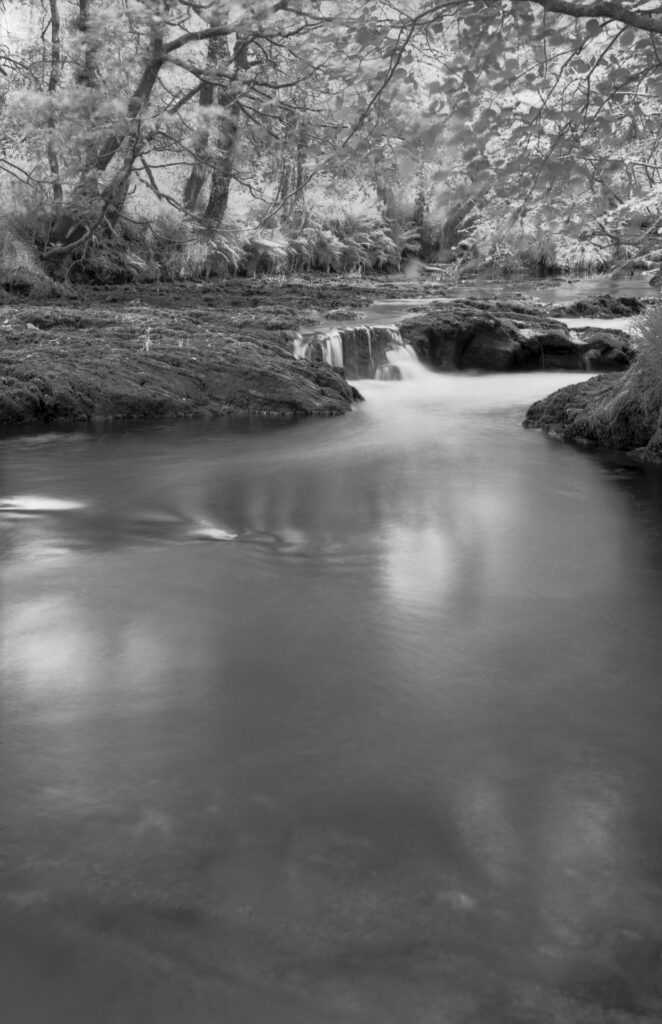
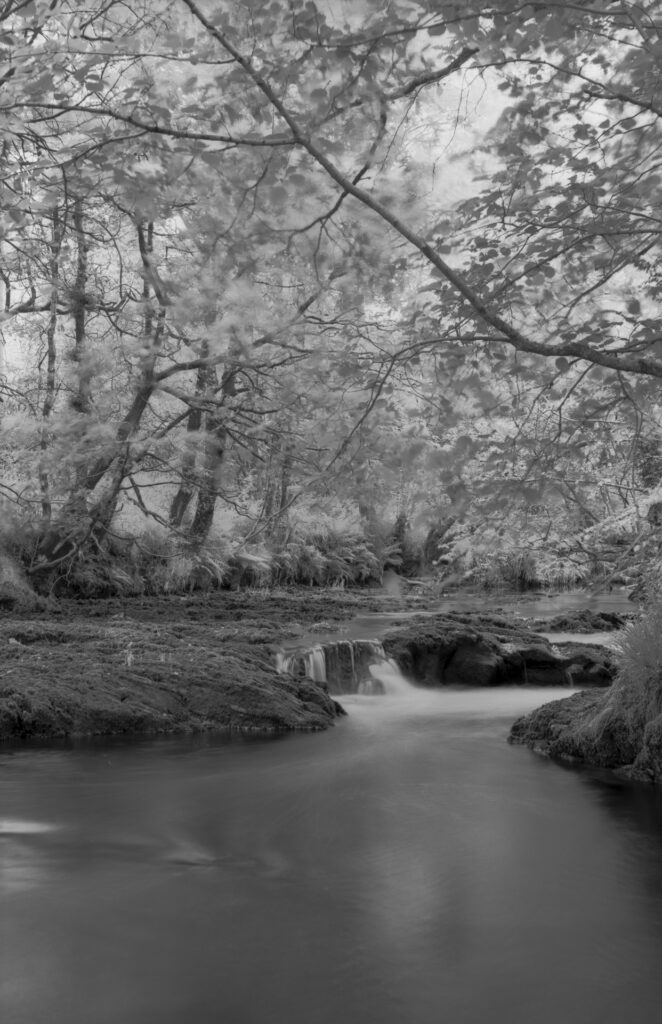
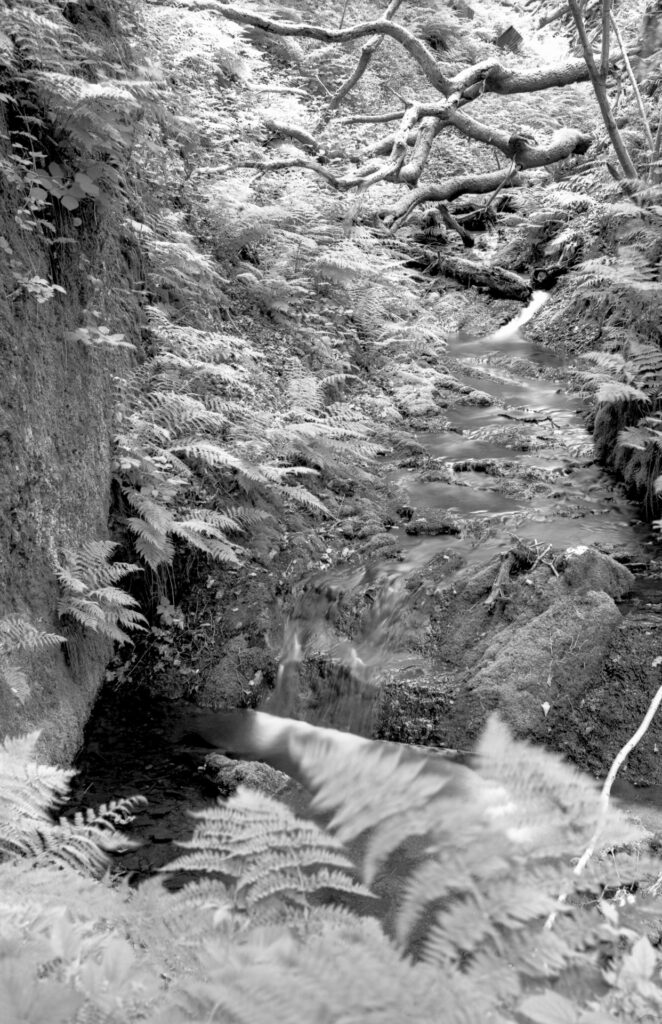
Overall I have been pleased with the camera, when I get everything right it takes very large highly detailed negatives and the Industar 23 lens is sharp from corner to corner with very little distortion.
Development was with Fomadon R09 (Rodinal) 1+50 for 11 minutes.
Share this post:
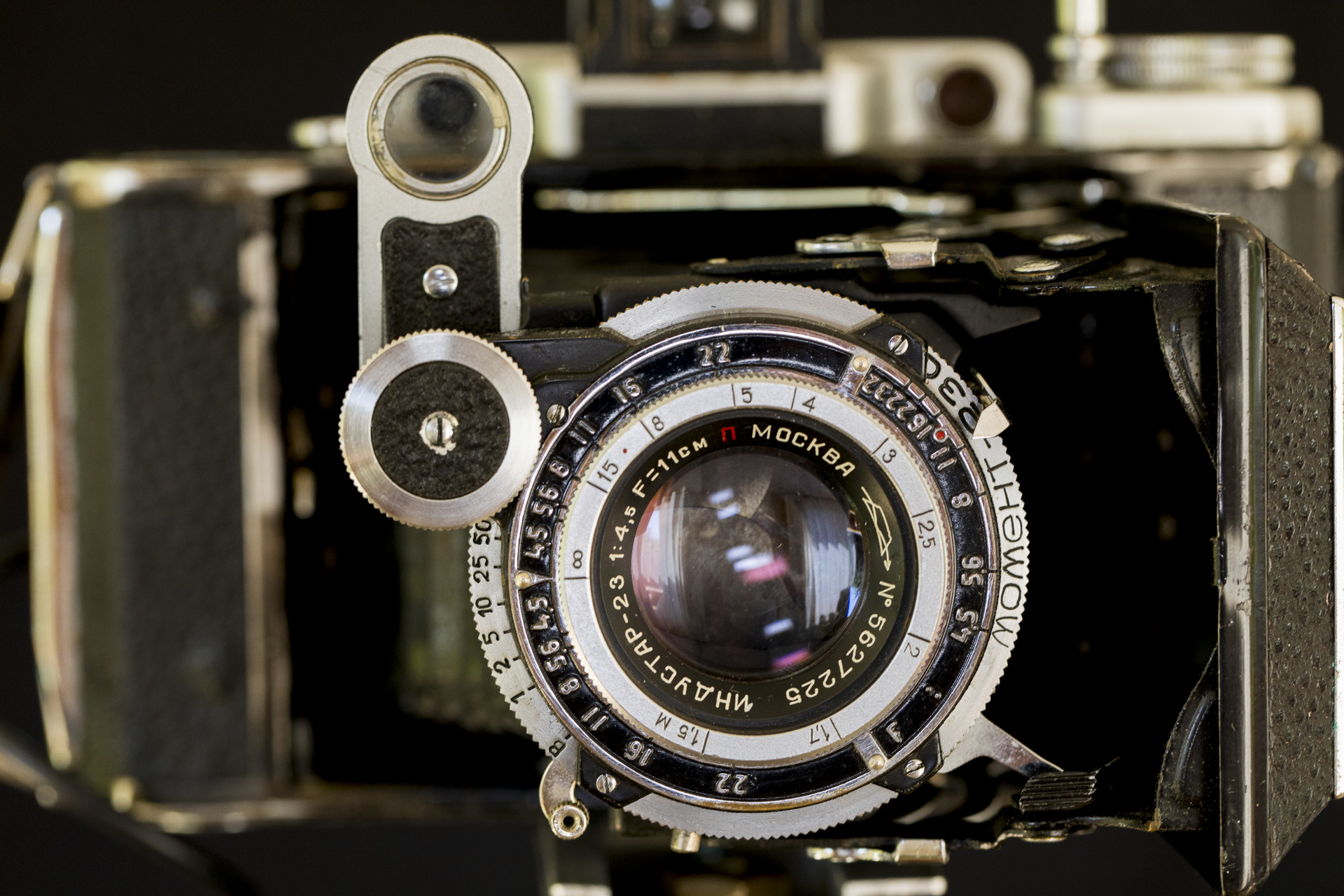

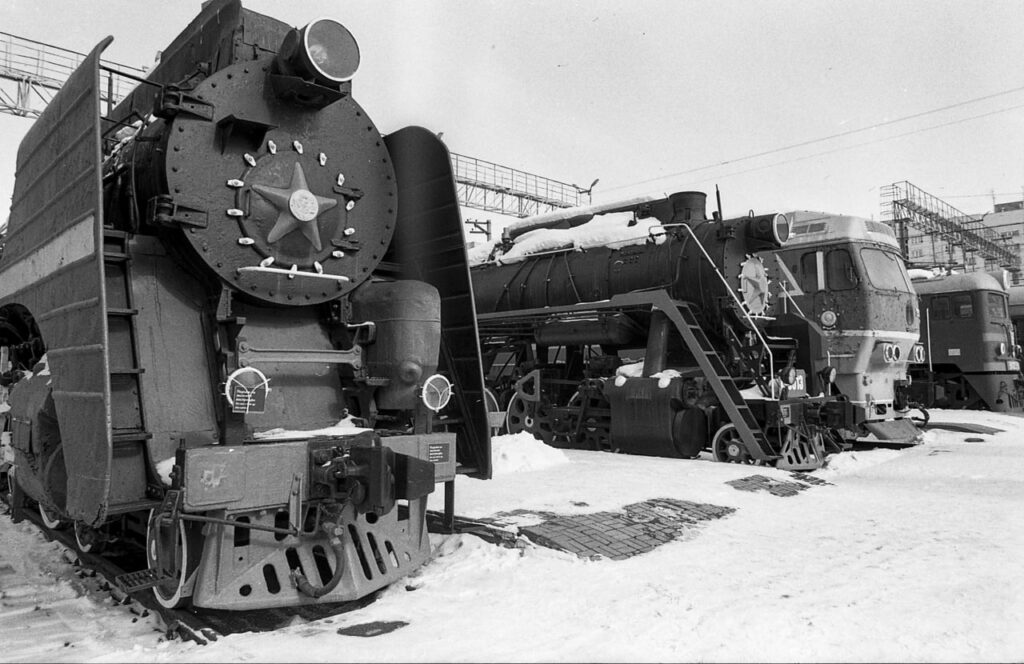
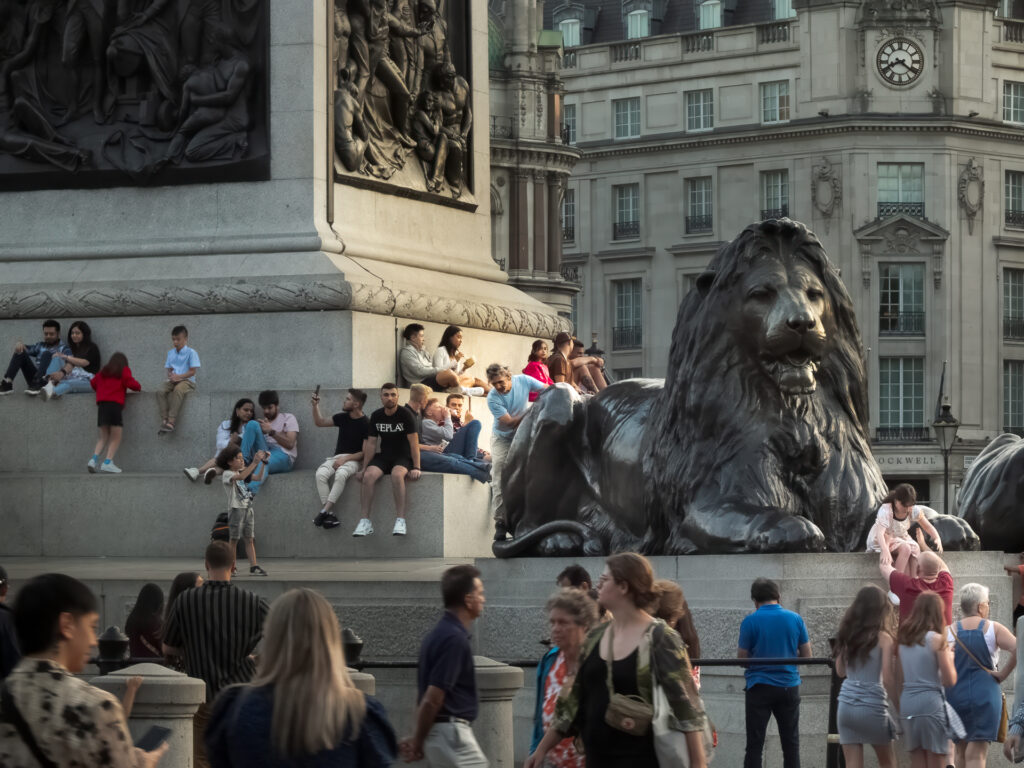
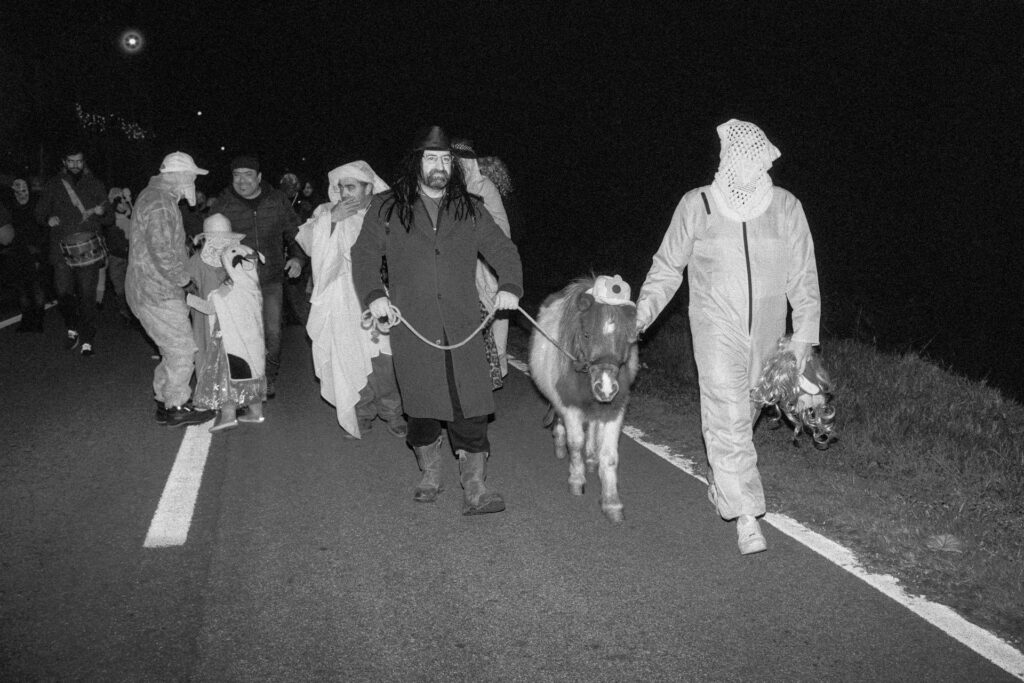




Comments
Jeffery Luhn on A Full Roll of Flowing Water with a Moscow 4
Comment posted: 28/09/2024
Your results look very good to me! I know what you've gone through because I have two 6x9 Mockva cameras with similar 'personalities!'
One thing they got right was the glass. Mine have clean sharp lenses too. These are not cameras for any kind of moving subject, like kids or sports, but the way you're using them can be rewarding. I really liked your compositions and full scale tones. Beautiful! I have bit the bullet and bought a mint Zeiss 6x9, which can be shot handheld. Will I ever use the Mockva again? Absolutely! It has a certain mojo.
Comment posted: 28/09/2024
Comment posted: 28/09/2024
Comment posted: 28/09/2024
Comment posted: 28/09/2024
Gary Smith on A Full Roll of Flowing Water with a Moscow 4
Comment posted: 28/09/2024
Your included examples are great! Thanks for the article.
Comment posted: 28/09/2024
Bill Brown on A Full Roll of Flowing Water with a Moscow 4
Comment posted: 29/09/2024
Comment posted: 29/09/2024
Russ Rosener on A Full Roll of Flowing Water with a Moscow 4
Comment posted: 29/09/2024
Comment posted: 29/09/2024